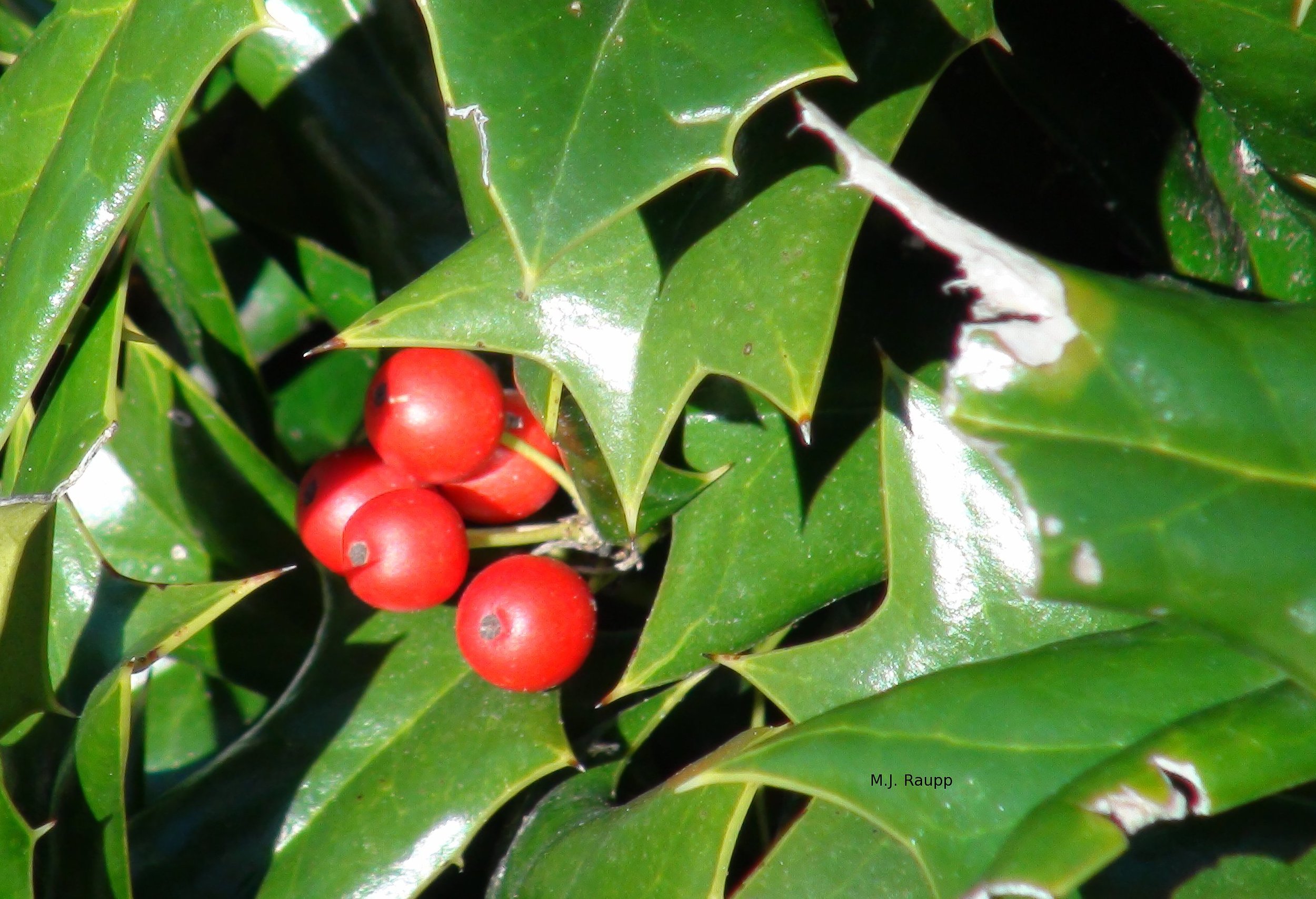Beneath the hollies' leaves are decorative surprises.
With the holiday season on our doorstep, Christmas trees and decorative greens have popped up everywhere from shopping malls to convenience stores. Fanciful merchants liberally apply snowy white flocking to enhance the beauty of Mother Nature’s creations. This mysterious substance born of an aerosol can conjures images of days of yore when horse drawn sleighs glided beneath evergreen boughs through Currier and Ives landscapes. Imagine my delight when I brushed back the branches of a holly and discovered leaves covered with dazzling flocking just in time for winter. No, this was not the handiwork of mischievous elves; rather this was the herald of cottony camellia scale, one of the most glorious sucking insects found on holly.
Flat camellia scale nymphs line the mid-vein near empty waxy egg cases from which they hatched.
Cottony camellia scale, a.k.a. cottony taxus scale, belongs to the clan of insects known as soft scales or Coccidae. As the name implies, this insect favors camellia, but hollies, yews, beautyberry, jasmine, hydrangea, and euonymus are also on the menu. We visited other soft scales in "There's a sucker born every day - Tuliptree scale”, and “The holly and the wax scale”. One of the hallmarks of scale insects in general and cottony camellia scale in particular is the habit of producing large quantities of wax. In the case of the cottony scale, the flocculent white wax forms a protective case, an ovisac, housing hundreds of eggs laid by the female scale. In spring and summer, female scales deck the hollies with ovisacs. Eggs hatch into remarkably flat translucent nymphs that wander the surface of the leaf before finding a spot to settle down. These strange insects insert thin stylets into the vascular system of the plant. With pinpoint accuracy, the mouthparts find nutrient rich cells.
Honeydew produced by the scales forms a substrate for sooty mold fungus that cloaks the leaves.
After tapping into the cells, a muscular pump in the scale’s head sucks sap from the plant into the digestive system of the insect. Throughout summer, fall, and winter the nymphs molt and feed. In spring, they complete development. Male scales develop wings and fly to find their mates, but females forego wings and remain leaf-bound. After mating, females produce brilliant white ovisacs and a fresh coat of flocking adorns stems and undersides of leaves. If white flocking were not enough, the cottony camellia scale provides one additional decorative wonder. To obtain adequate nutrients for development and reproduction, the scale imbibes large volumes of sap. Processed sap is excreted in the form of sugar-laden liquid called honeydew. As honeydew accumulates on leaves beneath the scale, a black fungus called sooty mold colonizes the sticky liquid and uses the sugars as a substrate for growth. When scales are abundant, leaves wear flocking of black sooty mold on upper surfaces with white scale wax beneath, how yin and yang. If holly boughs grace your home this holiday season, look carefully beneath a leaf or two and see if cottony camellia scale provided a flocculent surprise.
References:
The useful guide Managing Insects and Mites on Woody Landscape Plants by John Davidson and Michael Raupp was used a reference for this Bug of the Week. To learn more about cottony camellia scale, please visit the following web sites.


